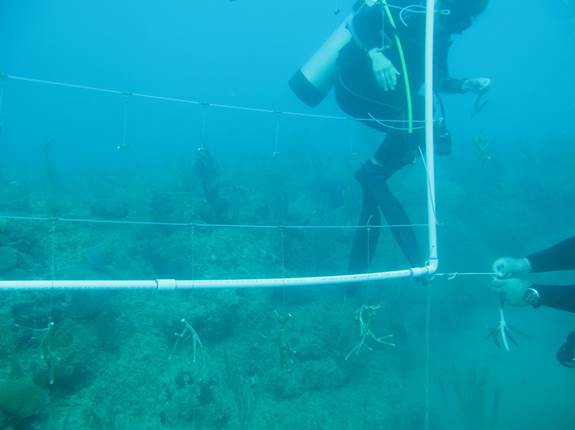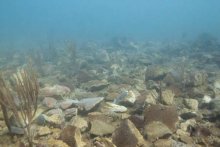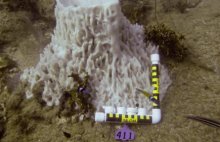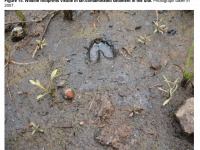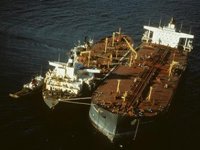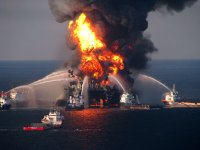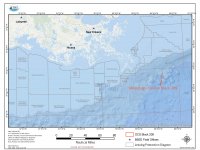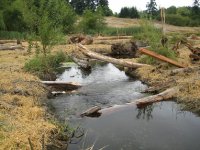T/V Port Stewart
Ship Grounding | Yabucoa, Puerto Rico | October 2009
What Happened?
On October 27, 2009, the T/V Port Stewart, a tank vessel carrying seven million gallons of oil, struck coral reef habitat off the southeast shore of Puerto Rico near the entrance to Yabucoa Channel. The vessel was eventually freed with the assistance of local tug boats. Extraction activities affected another section of reef approximately 600 feet to the south.
Following the grounding, NOAA and other TrusteesGovernment officials acting on behalf of the public when there is injury to, destruction of, loss of, or threat to natural resources. worked with the responsible partyThe individuals, companies, or government agencies responsible for an oil spill, hazardous substance release, or ship grounding incident. to salvage injured corals. Divers collected viable corals and placed them in areas protected from waves and currents until they could be reattached to the reef following removal of the vessel. Emergency restoration to reattach corals and return structure to the grounding site began in February of 2010, and was completed in September the same year.
What Were the Impacts?
The grounding of the tanker and subsequent response and removal actions resulted in substantial reef injury. Hard and soft corals, including the federally threatened Staghorn coral, and numerous other benthicorganisms that live in and on the bottom of the ocean floor. organisms were killed. An area of over 500 square meters was affected, with hard corals fractured and crushed, hard and soft corals dislodged, and bottom habitat scraped and pulverized. Reefs were also damaged during vessel removal by dragging tugboat cables and patches of anti-fouling paint.
What's Happening Now?
NOAA and the Puerto Rico Department of Natural and Environmental Resources conducted a preliminary assessment of injuries caused by the grounding and response activities. We are also monitoring the recovery of reef habitat and coral communities. We then developed a draft restoration plan to compensate the public for these injuries.
The draft restoration plan was released for public comment in January 2017, and a final plan was released in March 2017. The plan outlines our injury assessment and restoration planning process and describes the planned restoration actions. We will now begin implementing restoration.
"Comprehensive Emergency Restoration efforts saved approximately 1,000 corals, stabilized most of the rubble and restored the underwater landscape using limestone boulders so the site could begin to recover. These actions accelerated the recovery of the reef so that it can once again support fisheries and recreational opportunities."
Sean Griffin
NOAA Coral Reef Restoration Ecologist
Contacts
Daniel Hahn
NOAA Office of Response and Restoration
St. Petersburg, FL
(727) 551-5717
Daniel.Hahn@noaa.gov
Tom Moore
NOAA Restoration Center
St. Petersburg, FL
(727) 551-5717
Tom.Moore@noaa.gov

